What Is the Difference Between Dental Implants and Veneers?
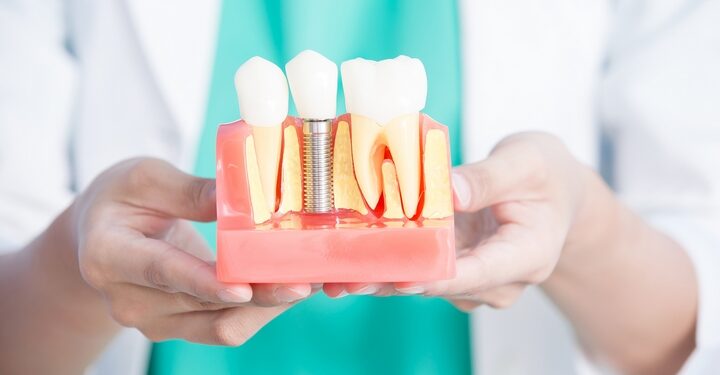
Thanks to technological developments, nearly everything has been made possible, including improving a smile that you aren’t satisfied with. Dental implants and veneers are the most popular way of working on the teeth for cosmetic purposes alongside improving dental health and lifestyle.
Although their functions are almost similar, dental implants differ from veneers in several ways that will be disclosed in this blog post.
Differences Between Dental Implants and Veneers

Veneers are porcelain or ceramic-derived bonds placed above the teeth to enhance smiles. They are best known for gapped, crooked, misshapen, holed, stained, or chipped teeth, although they may not be effective if the teeth are gapped far apart.
Conversely, dental implants consist of an artificial tooth-like object made of titanium (firm enough). They are planted to the jaw bone to replace a missing or extensively destroyed tooth.
Both veneers and dental implants are shaped to align with the patient’s teeth. Besides their definitions, dental implants and veneers differ in many other aspects, including the treatment process, pros, cons, and cost.
Dental Implants
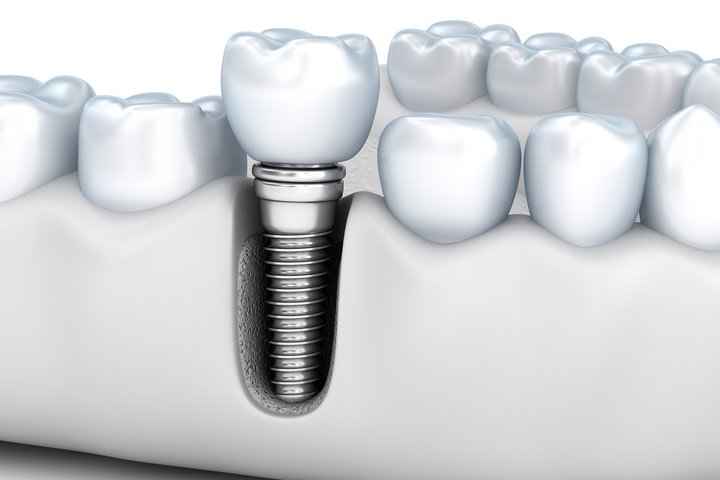
Now that you understand dental implants, we can confidently learn how they are installed. The process of installing dental implants is relatively comprehensive (taking up to six months) compared to veneers. On the first consultation appointment, the dentist performs a critical examination of the mouth to evaluate the condition of the patient’s jawbone and teeth.
The examination can be through a CT scan, X-rays, or physical, concentrating on the affected tooth. The dentist will proceed with the procedure if the patient’s jawbone is stable enough for a dental implant. In the cases of weaker or unstable jawbones, dentists have to administer other treatments to strengthen them and the entire health of the patient’s bones.
Assuming the jawbones fit the procedure, the patients are booked for their next clinic, where the dentists install dental implants into the jawbone. Dental implants take roughly six months to connect to the jawbone.
After a successful surgery, the dentist conducts a more straightforward procedure on the gum, which involves placing a non-permanent cap on the implants, so the gums heal properly. The cap takes one to two weeks to heal.
When the cap heals, the dentist eliminates and replaces it with an abutment meant to hold a temporary crown that’s worn for 5 to 6 weeks. The crown is intended to enhance the proper healing of the gum and the surrounding areas.
After six weeks, the dentist removes and replaces the non-permanent crown with a permanent one which should last a lifetime, not unless otherwise.
Benefits of Dental Implants

Dental implants boast plenty of benefits, including their unmatchable durability, facilitating better chewing, and inhibiting bone loss in the jawbone. Additionally, the artificial root in dental implants connects to the jawbone like an ordinary tooth. Dental implant patients can be sure of a lifetime service, free from possible gum diseases and facial issues.
Cons of Dental Implants
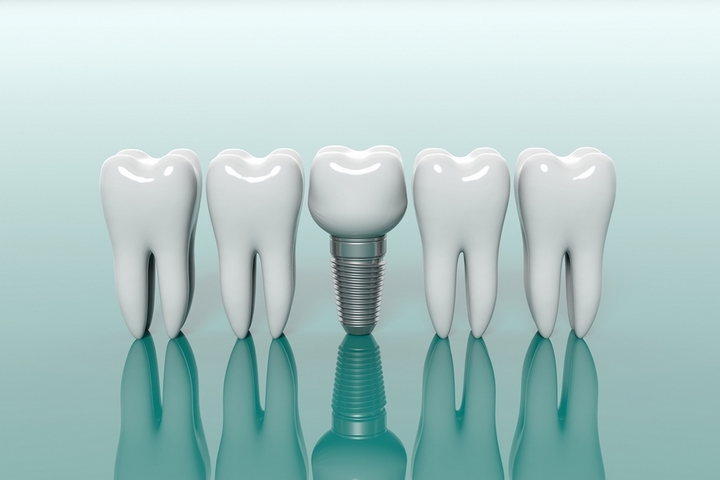
However, it’s quite costly to install dental implants, considering that most insurance companies do not cover them. Again, the surgery process is long and overwhelming, especially when you have to catch up with work and other daily activities.
Although rare, complications associated with dental implant surgeries can arise during and after the process, including jaw fractures, prolonged bleeding, nerve damage, delayed healing, and damage to the adjacent teeth.
Dental Veneers
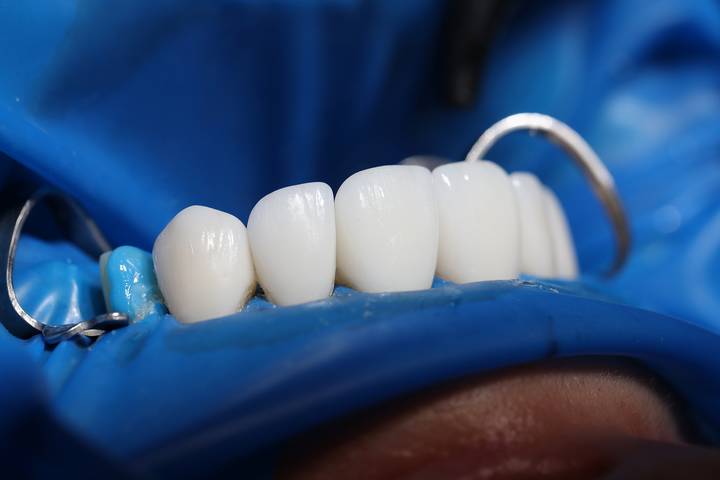
The chapter on dental veneers is slightly narrow, as they aim more at achieving cosmetic purposes than health purposes. Dental veneer patients need approximately three weeks for the entire procedure. During the first (consultation) visit, the dentist examines the patient’s mouth through an X-ray or CT scan to evaluate if they are fit for the procedure.
For the qualified patients, the dentist books them for the second visit, during which they will have a layer of the affected tooth or teeth enamel for the veneer to fit more perfectly. After cleaning, dentists draft the teeth’s impression, customizing veneers that will align satisfactorily.
The customized veneers are compared to the patient’s teeth during the last visit, creating room for possible changes. If the veneers align with the patient’s teeth, they are fitted carefully, and the patient enjoys a new sparkling smile.
Benefits of Veneers

Besides the short and straightforward procedure, veneers look more natural, enhancing the patient’s confidence and lifestyle. Additionally, the process is less costly compared to acquiring dental implants.
Dental veneers are designed to resist discolouration better than ordinary teeth and solve many issues, from chipped to discoloured, gapped, and misshaped teeth. Installing veneers is entirely painless and doesn’t involve surgeries that would attract further health issues.
Cons of Veneers
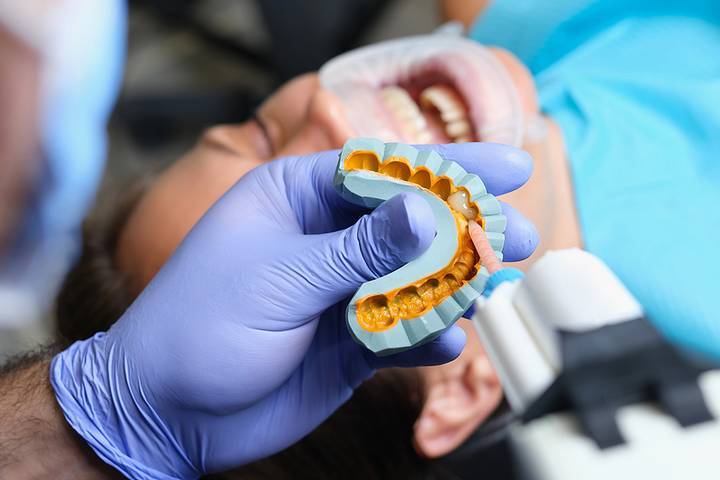
Veneers are vulnerable to breakages and chips caused by chewing complex objects or falling. Veneers patients should practice critical dental care routines to keep the covers healthy. If not well installed or maintained, veneers can cause teeth sensitivity.
Even worse, veneers worn for long periods without proper care can permanently bond with the patient’s teeth. In such a case, the removal process becomes close to impossible. Veneers with proper installation and maintenance should last between 15 to 20 years.
The details regarding veneers and dental implants are inexhaustible as they both play a vital role in dentistry. You can confidently decide which procedure works best for your teeth with the best information.
Importantly, it would be best if you worked with an experienced and reputable dentist to get yourself the most eye-catching smile possible. Drop us a visit for the best dental practical procedures, and we guarantee value for your money back.


